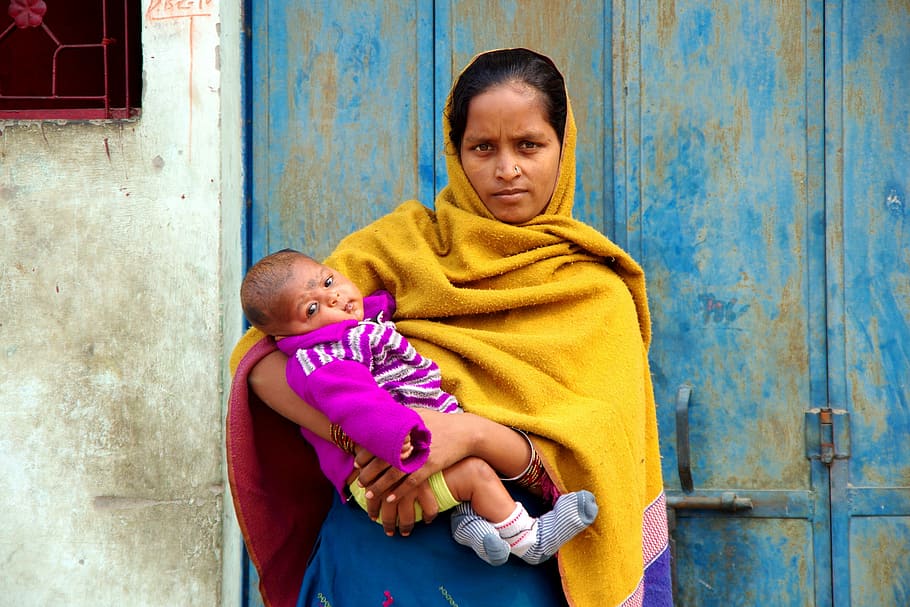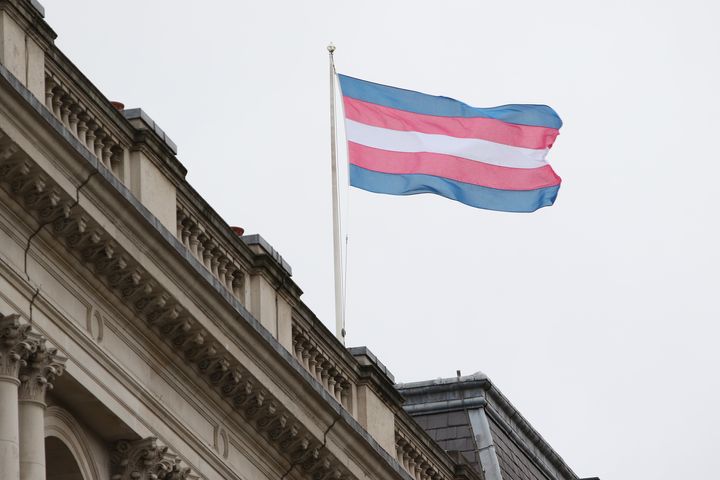For Indian Women During COVID-19, There is No Such Thing As Social Distancing

It was around 1.00 pm and I was dozing off on the living room couch with the laptop on my chest. I woke with a jolt because I heard our neighbor talking to my mother; I was ashamed to be caught sleeping legs apart and mouth open. Indians don’t comprehend the concept of ‘space’ much, let alone privacy. We are a family of six—five humans and a dog. I don’t have a room of my own, but more on that later.
Our Prime Minister Narendra Modi addressed the nation the previous day, asking all Indians to observe #JanataCurfew—an effort to stay indoors to combat the spread of COVID-19 pandemic. Thankfully, the neighbor was standing at her door and the conversation went this way.
Neighbor: I wish I could step out a little, this quarantine is getting to me. I have been indoors for a week before the announcement.
Mom: Yes, my children are all working from home too. In a way, it is good. Or else it is just me all day. There is only so much TV you can watch.
Neighbor: I don’t think we could have pulled this off when we were younger.
Mom: Impossible. We were six siblings, my parents and grandmother in a house with two rooms and one toilet.
Neighbor: We were five in a small house. Imagine testing positive in a house like that?
Mom: It feels no different from our period isolation, to be honest. They used to make us girls sit next to the door near the toilet, and we had to keep moving every time someone had to use the toilet.
Neighbor: I’m glad it is in the past. Now we can relax a little. *pressure cooker whistles* I better go get lunch sorted then. Everyone is working from home here as well.
Mom: Yes, take care.
My mom shut the door and asked what I would like for lunch. Their conversation exacerbated my period crankiness and I brushed her off by mumbling “later!” It made me wonder about the efficacy of self-quarantine for females, in an Indian household, where all the chores are principally the woman’s domain. Even during a pandemic, should she be showing symptoms, there is no reprieve. The women continue to slog. What is the point of a quarantine that makes it harder for the women? As I elaborate on the reasons, I speak for almost all households in India.
We are not new to self-imposed isolation. We menstruate.
The Desi patriarchy in Indian households put menstruating women in isolation by citing “scientific” reasons. Having graduated from WhatsApp University, these “adults,” cite the benefits of drinking cow urine too, so it is hard to take them seriously. I broke away from this practice early on, and have since been called a deviant, a freak. Not a lot of women have this luxury.
Unlike with COVID-19, menstruating women don’t carry any life-threatening virus. But the amount of credence given to a monthly, natural phenomenon is so much more than the pandemic. It baffles me how every family even during the worldwide lockdown, would rather not touch a menstruating woman, but go on protests against the virus screaming, “Go corona, corona go!”
The blueprint of an Indian home—if we get a corner to ourselves, it is a miracle.
I don’t have a room to myself in my house. I am single therefore I don’t deserve privacy. It is true for most middle-class houses too. 69% of 170 million households live in a house with either one or two rooms in total. Ten million of those use a single room as the front of a business and sleep right there at night. The concept of being six feet apart to evade the virus would make sense if there was indeed that kind of space, but in most cases, it will be a miracle if we get a corner to ourselves.
Unless you are a menstruating woman. Then you get the corner next to the toilet.
Urmila Maurya, a mother of three, can’t put into practice any of the protective measures against COVID-19 prescribed by the World Health Organisation. Her family of five lives in a 10×10 ft room in Janata Nagar, at the farthest edge of Mandala, a slum of about 4,000 shanties.
“Wash our hands frequently? Sometimes I have to skip bathing to save water for cooking,” Urmila said. Mandala is a creek-side slum in Mumbai’s eastern suburbs, much like the dozens of other slum colonies across the country.
The entirely ignored free labor of stay at home mothers.
Stay at home mothers are often considered to be a non-item when it comes to the nation’s economy.
“The omission of unpaid services of housewives from national income computation distorts the picture”, wrote economist Paul Studenski in his classic 1958 text The Income of Nations. He concluded that unpaid work in the home should be included in GDP. Like all things in this world, policies are man-made and, during the Second World War, it was decided that while it is important to measure and value unpaid household services that this would be “too big a task in terms of collecting the data,” Diane Coyle, professor of economics at Manchester University explained in the book Invisible Women, by Caroline Criado Perez. In her book, Perez also points out that in India, 66 percent of women’s work time is spent on unpaid labor, while only 12 percent of men’s work is unpaid.
Anuja Tyagi, a young mother pointed out, “Because the division of labor of household chores and childcare is disproportionate on the side of women and especially mothers, social isolation is particularly tough on them. For mothers like me who have a toddler, the prospect of caring for a child round the clock in a responsible manner is daunting, especially with no play breaks. As the primary caregiver of the child, I expect the lockdown months to be long hours of exhaustion.” She encapsulates the global experience of motherhood succinctly.
During a pandemic, when a significant number of people are working from home, the labor of a woman goes unnoticed. While the men grunt about their favorite sports events being canceled, the women in the house deal with it while keeping them well-fed and safe. According to the early estimates from the UN Conference on Trade and Development, an estimated $1 trillion is expected to be knocked off from the global economy in 2020. How worse would it be without the unpaid labor of the females in all the households?
So what about working women?
India has a shameful reputation for its rampant caste system. In 2020, it is still in practice. A certain section of the society belonging to the “lower caste,” is expected to do sanitation work with no protection or safety. Women who manually scavenge are still being seen on the streets going about their job with a handkerchief over their noses. Domestic workers, caregivers in the social sector, nurses on the frontline, midwives, women in hospitality industries can’t afford to take the days off. What happens when these women contract the virus? If they choose to self-quarantine, it would have to be without pay. Many migrant women travel to different cities for work. During a crisis, women are often subjected to sexual abuse. These women, unfortunately, will be worst affected.
What about the women a little higher up in the pecking order? Women who work in tech companies find themselves to be doubling up as cooks, moms, carers and errand girls.
“Women's roles are largely relational,” said Sadaf Vidha, Psychologist and Researcher. “So it's hard for women to say where their self ends and the other begins. While working from home, the lines are even more blurry because women are often not able to differentiate ‘self’ and work needs. They mentally associate home spaces with care-taking roles. Perhaps the worst blow is due to the fact that this is a health crisis, so women feel guilty taking care of themselves or even working unless they have ensured they've done everything they could for others.”
When things get worse and supplies run dry, like in Italy, the mothers will be the vulnerable demographic because they will be expected to martyr their health to ration the supplies for the children.
An extended period in isolation puts women in abusive relationships at risk.
In India, every third woman suffers from physical and sexual violence at home. Having survived an emotionally abusive relationship, I shudder to think about the many women who are trapped in relationships with an abuser. India also has a dubious distinction of upholding Section 375 of the Indian Penal Code that explicitly allows a man to rape his adult wife. Not to mention, in the 2016 NCRB (National Crime Report Bureau) data, where it is revealed a child is sexually abused every 15 minutes in India. This is an 82 percent increase from the 2015 data, and Tamil Nadu (the state I belong to) had the third-highest incidences of such crime. These are merely the reported cases, the actual numbers could be far more horrifying.
Post-disaster mechanisms—will women be ignored again?
Simone de Beauvoir’s poignant observation makes so much sense in this context.
“Representation of the world,” she wrote, “like the world itself, is the work of men; they describe it from their own point of view, which they confuse with the absolute truth.”
Much like the rest of the world, researchers on medical conditions have all assumed a default male. Owing to its population and visible corruption, the proclivity to ignore women in India is bound to happen yet again. With one hospital bed per 1826 people and one doctor per 11,600 patients, the PM would rather exhaust funds with a ₹ 20,000-crore Delhi power corridor revamp plan or by owning a ₹ 4.31-crore suit.
“Most of recorded human history is one big data gap,” Criado Perez begins in Invisible Women. “The chroniclers of the past have left little space for women’s role in the evolution of humanity, whether cultural or biological… When it comes to the lives of the other half of humanity, there is often nothing but silence.”
Perez argues how this silence affects women everywhere. It could be minor inconveniences in day to day life or life-threatening events such as when women’s heart attack symptoms are brushed off as atypical and many go undiagnosed. Or car crashes’ safety measures don’t account for female measurements and cars keep getting manufacturers not keeping 50 percent of the population in mind. In a hypothetical world, if COVID-19 were to exclusively threaten biological women, I predict that the world’s response wouldn’t be half as exigent as it is to erectile dysfunction.
The generous support of our readers allows 4W to pay our all-female staff and over 50 writers across the globe for original articles and reporting you can’t find anywhere else. Like our work? Become a monthly donor!
Enter your email below to sign in or become a 4W member and join the conversation.
(Already did this? Try refreshing the page!)





Comments